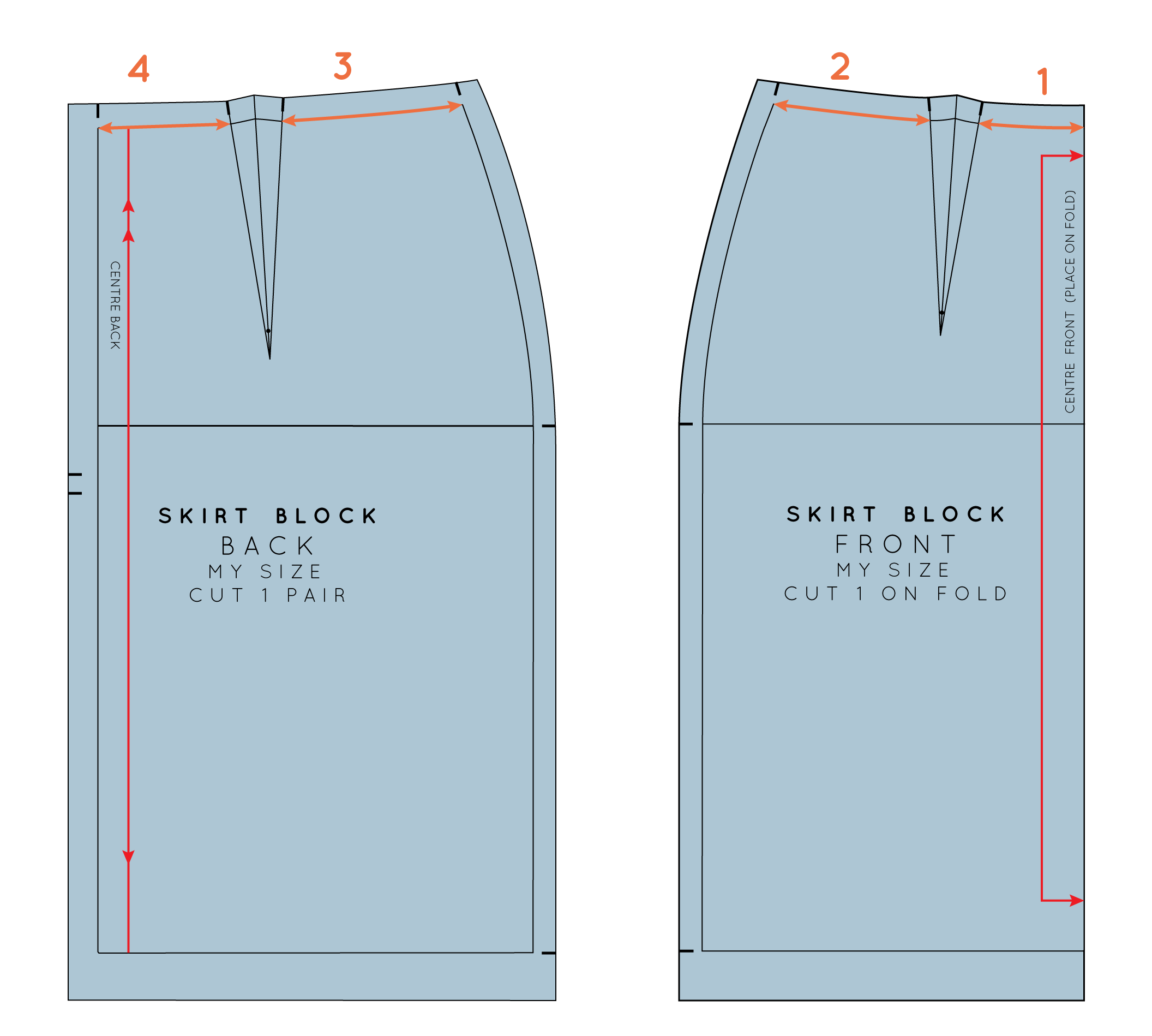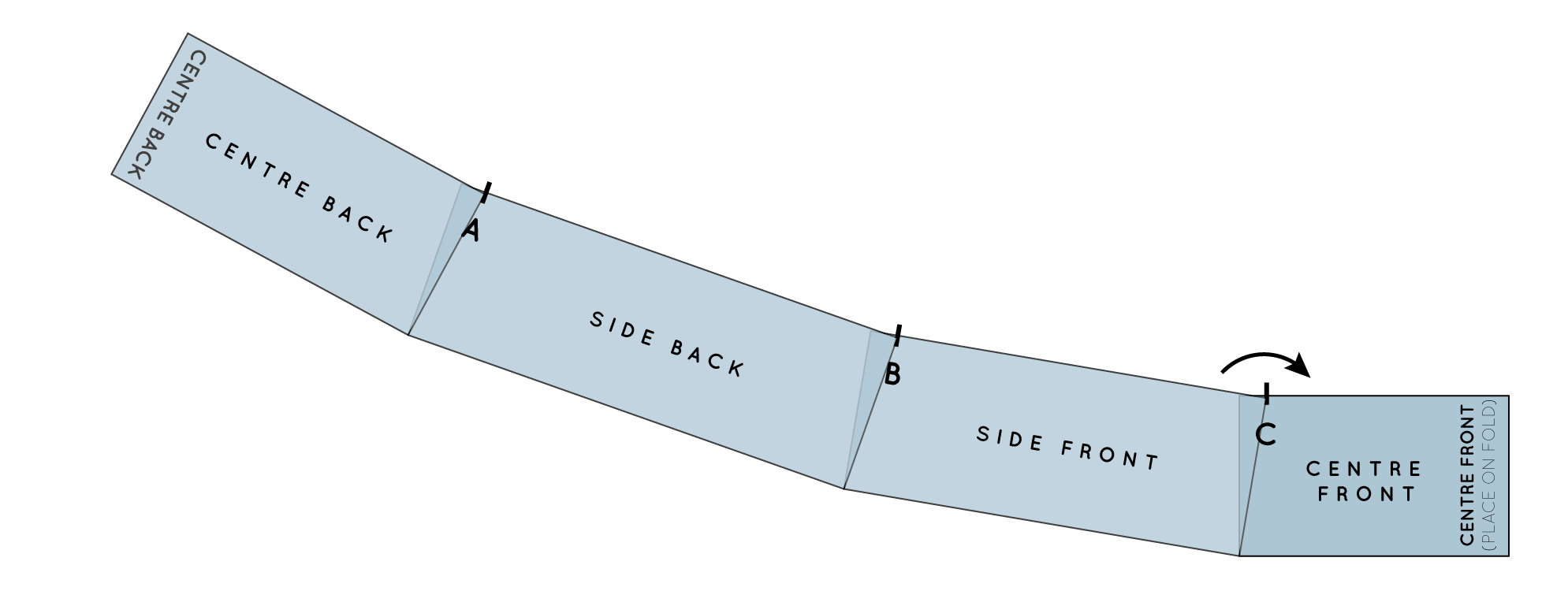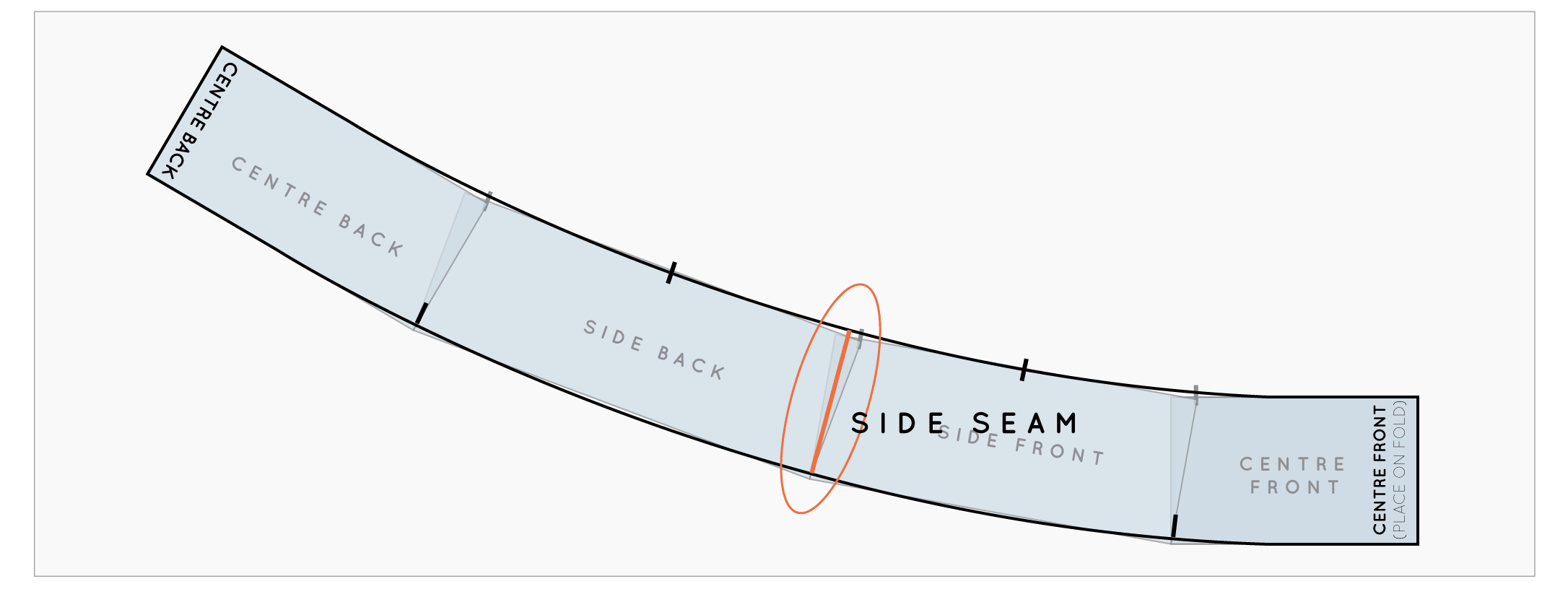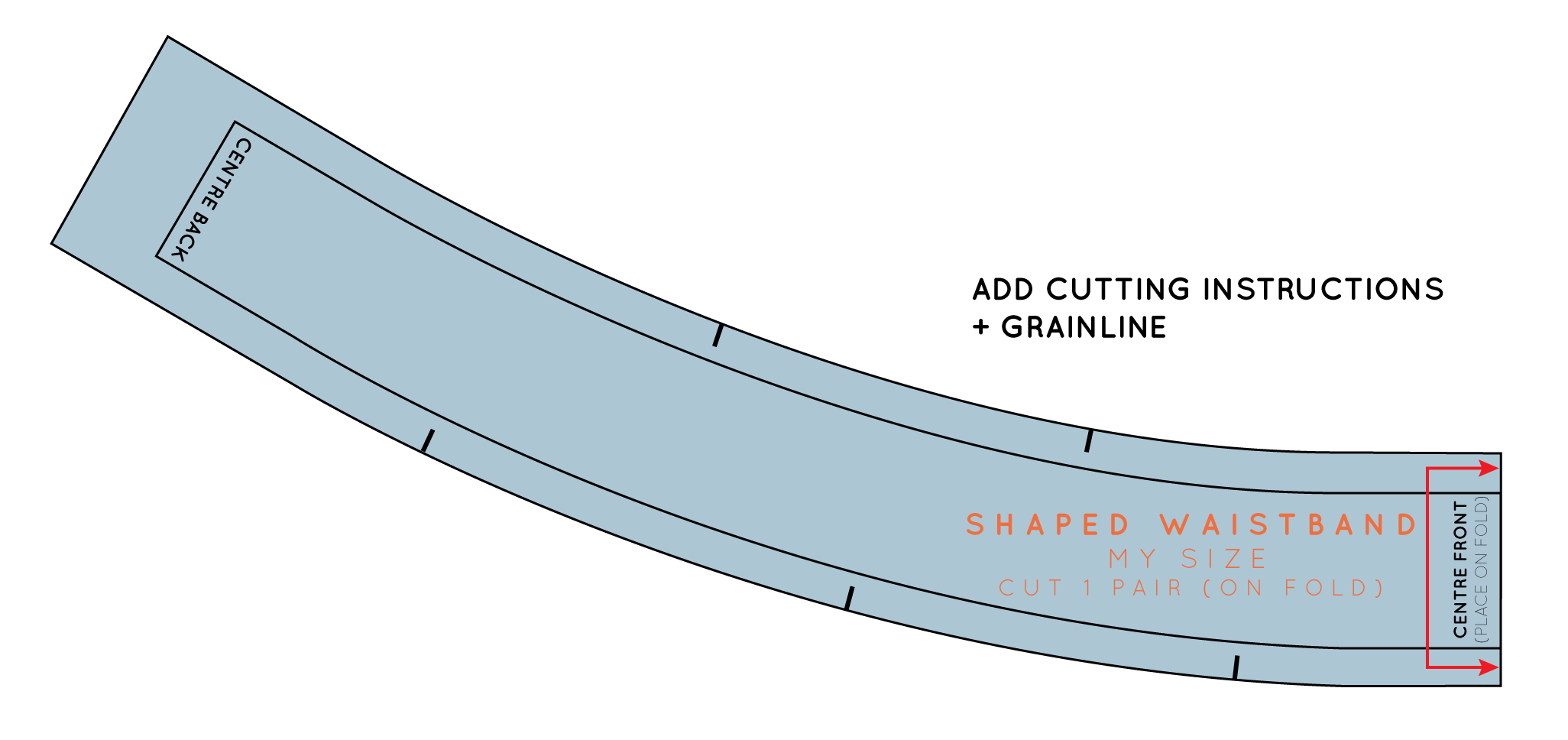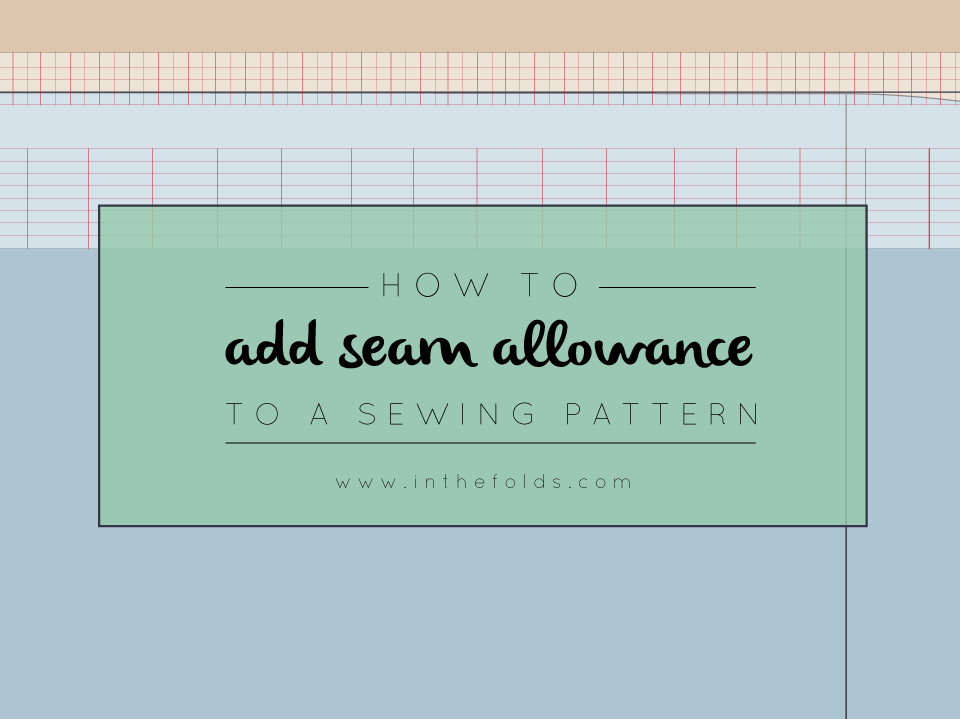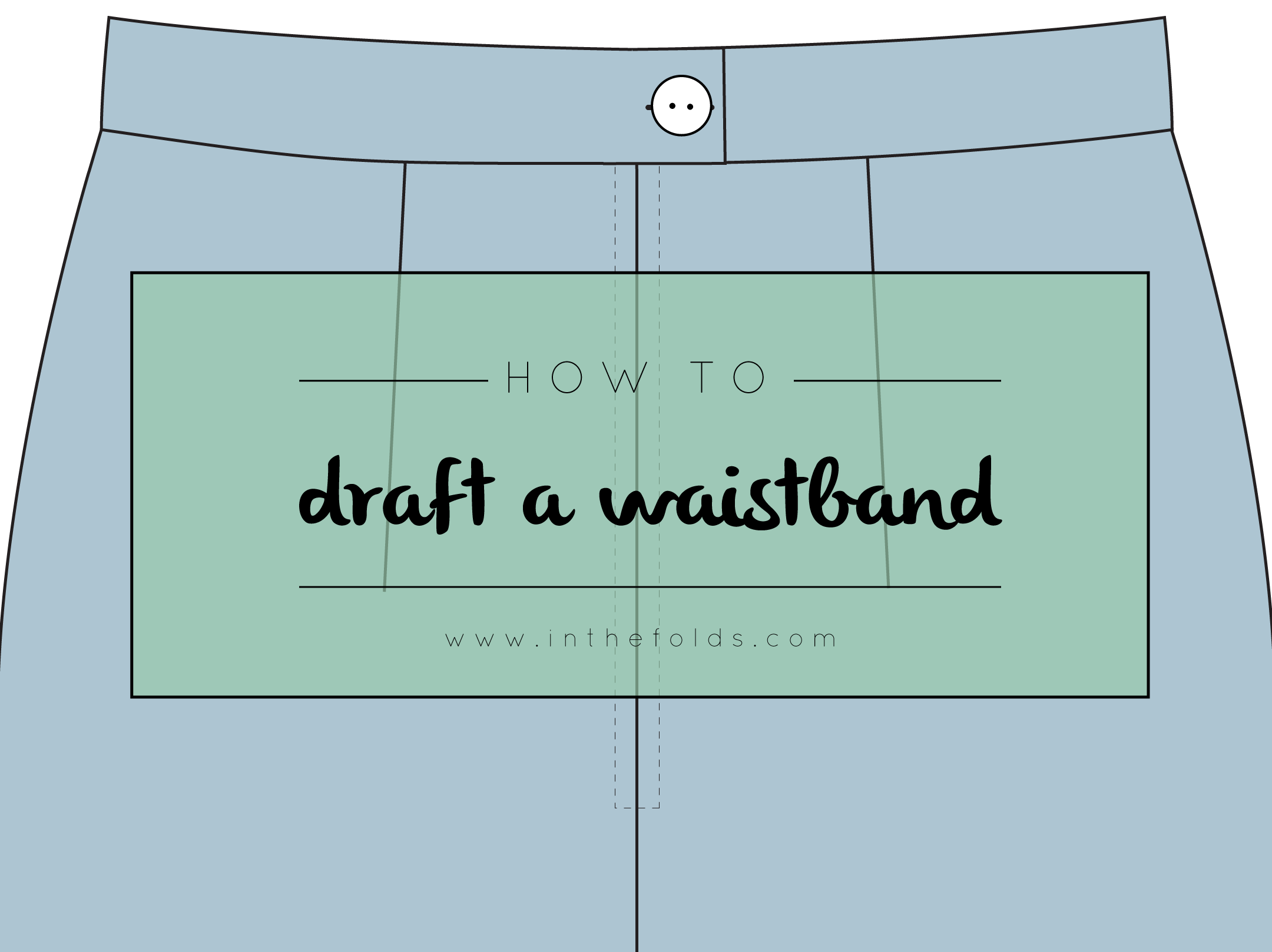Last week, I showed you how to draft a straight waistband for your skirt block (it will also work for other garments, such as trousers) as part of The Skirt Series I have been running for the last couple of weeks. Today, I will be showing you how to draft a shaped waistband.
Before starting, though, I'd like to a little re-cap of a couple of things (which you may remember, if you read the previous waistband post).
two types of waistbands
Most waistbands on skirts or trousers are based on these two basic waistband shapes:
A straight waistband - which is a long rectangle that generally does not have side seams.
A shaped waistband - which may, or may not, have side seams.
SHOULD I DRAFT A STRAIGHT WAISTBAND OR A SHAPED WAISTBAND?
Either option can be drafted for the skirt block, and which is better for you comes down to individual preference and body shape. For me, I am a little too curvaceous in the lower half to feel comfortable in a straight waistband (as the top of a straight waistband tends to gape on me).
If you followed the tutorial to draft a straight waistband, you will see the first few steps are the same, so if you'd like to go back to the construction of your straight waistband, then you can! If you haven't already drafted the straight waistband, not to worry, just skip over the next two steps and start with 'Take measurements.'
Trace your pattern
On a seperate piece of pattern paper, trace a copy of the straight waistband, without seam allowance.
Indicate the centre front and centre back.
Using the notches to guide you, mark the points of interest (front dart, back dart, side seam) with vertical lines on the pattern.
TAKE MEASUREMENTS
If you haven't already drafted the straight waistband, you will need to start by taking some measurements from your skirt block.
Remember to measure along the stitch line, not the edge of the pattern.
Measuring along the waistline, on the front pattern piece:
1 - Centre front to first dart arm
2 - Second dart arm to side seam
On the back pattern piece:
3 - Side seam to first dart arm
4 - Second dart arm to centre back
WAISTBAND CONSTRUCTION
There are several ways to draft a shaped waistband, including using the waist section of the bodice block to construct, but as I have not yet shown you how to draft a bodice block (but definitely plan to in the future), I'll show you how to draft the waistband using the skirt block.
Add the four measurements taken in the previous step together to find the length of the waistband. Remember this measurement gives you half the waistband, as the pattern piece can be cut on the fold. Draw a line as long as this measurement.
Decide how wide you would like your waistband to be - consider a measurement around 3 - 6cm (1 1/4 - 2 1/4in). Draw a perpendicular line from either end of your original line, the height of your waistband.
Complete the rectangle by connecting the end points of the lines drawn in the previous step.
So now that you have the basic shape, it's time to get some markings onto your pattern piece.
Going back to your original measurements (from your skirt block), measuring from the right hand side of your waistband, mark in each point of interest with a perpendicular line. You need to mark the location of your front dart, the side seam and back dart. You can also label each end as the centre front (right hand side) and centre back (left hand side).
And this is where the tutorial takes a turn away from the straight waistband tutorial...
Label your pattern
Label each section of the waistband, with the following:
1 - Centre front
2 - Side front
3 - Side back
4 - Centre back
Measurements required
You will now need to find the difference between your waist measurement (where your skirt sits) and the top of your waistband.
A good way of doing this, is by putting on your skirt toile (as you can see, my skirt is a digital one!) and working out where the top of your waistband will sit (this will depend on how wide you are making your waistband). Take a tape measure and measure around your waist at the point where your waistband will end. Take note of the measurement.
Compare measurements
Work out the difference between the measurement you just took and your actual waist measurement. Take note of this number.
You now need to divide this measurement by 2 (as you will be cutting your pattern on the fold) and then divide it by 3 (as you will be distributing the measurement evenly throughout the pattern piece).
For example, if the difference between your measurements is 6cm, you need to divide that by 2, which gives you a result of 3cm. You then divide the 3cm into 3, giving you 1cm. That number (in this case, 1cm) is the one you need in the next step.
Waistband construction
Take that number and, on your waistband, mark a point to the right side of each vertical line (excluding the centre front and centre back), that distance away from the line. If you were to use the same numbers I used in the example above, for this step, you would need to mark a point 1cm from each vertical line.
Label these points as A, B and C.
Cut
Cut down each vertical line, from the top of the waistband. Do not cut all the way through the pattern, leave a small "hinge" to keep the pattern pieces attached.
Close
Being careful not to break the "hinge," rotate the centre back piece, until the slashed line overlaps point A. Tape or glue in place.
Repeat for the 'side back' piece (which is now attached to the centre back piece). Rotate until the slashed line overlaps point B and then stick in place.
Rotate the final slash line, aligning the cut line with point C.
As you can see, your waistband is no longer a rectangle! The top edge of your waistband is now narrower than the bottom edge.
Trace the pattern
Take a piece of pattern paper and place it on top of your waistband construction so that you can trace it.
Start by tracing the centre front (and labelling it as the 'centre front'). From the centre front draw a perpendicular line at either end of the line.
By doing this, you will ensure that you get a nice smooth waistband across the centre front and back (as you can see in the example above) - when the piece is cut on the fold.
Repeat for the centre back.
Now, using a ruler, or a hip curve, join the perpendicular lines (drawn in the previous step) with smooth curves, creating the waistband shape.
Add notches
Before removing the pattern from the construction underneath, mark each point of interest with a notch. These notches will make it much easy for you to sew the waistband to the skirt, without the worry of stretching the waistband.
It is also a good idea to add notches along the top edge of the waistband. I like to put them in a different spot to the notches on the bottom edge, to save any confusion.
Add a side seam
If you would prefer to have a side seam in your waistband (rather than all-in-one), at this point you should draw in your side seam. Draw a straight line from the middle notch on the lower edge of the waistband up through the centre of the respective slash line (through the centre of the overlap).
Add seam allowance
You should have now transferred all the necessary details from your pattern construction onto your pattern. You can now add seam allowance to the top and bottom edges, as well as the centre back. I would suggest 1-1.5cm (3/8 - 5/8in) on the curved edges and 1.5-2.5cm (5/8in - 1in) on the centre back.
If you have added a side seam, I would suggest adding seam allowance of 1.2 - 1.5cm (1/2 - 5/8in) to this seam.
Add grainline and cutting instructions
Mark the grainline (parallel to the centre front) and add cutting instructions (cut 1 on fold).
If you have added a side seam, the grainline on the back piece will run parallel to the centre back, and the cutting instructions will be 'cut 2 pairs'.
You may consider fusing you waistband, but that will come down to your fabric choice and design.






